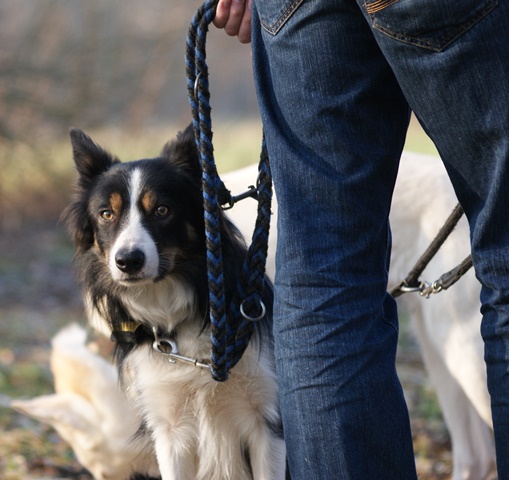
Due the success of our original article about modern dog training, we have decided to provide an English translation online.
Let’s start out by imagining the following situation: suddenly you find yourself in China where you’re faced with several problems, not only do people speak a language unknown to you but they also have a completely different cultural background.
It’s hard to know what’s the right (or wrong) thing to do. When you’re not familiar with local customs and culture you depend upon the people to show you what’s ‚right and proper‘. To say hello to the first nice looking person you come across you hold out your hand – but he or she ignores you. For somebody who is reliant on being part of a social community, this can be a quite dramatic experience. Then you take your hand back and – hey presto – they throw a piece of chocolate at you.
Contents
- Absurd you say? Well, for some dogs this is everyday life.
- Modern dog education
- The theory of modern dog education
- Science and normative statements
- Putting it into practice / Practical dog keeping
- The dog as a stimulus-response machine?
- Aggressions
- Personality development at risk from over-control: how dogs learn to be helpless
- Non-violent dog training?
- Cultivating a culture of open communication
Absurd you say? Well, for some dogs this is everyday life.
Back in Germany: On the children’s playground little Kevin and Jacqueline are playing in the sandpit together. Jacqueline is in a bad mood. Maybe she has got serious problems at home or maybe she’s just a kid trying to test the limits. Anyway – Jacqueline takes Kevin’s play bucket. Obviously, Kevin is pissed. So he takes his toy shovel and starts hitting Jacqueline on the head.
Jacqueline is crying and Kevin keeps on hitting. But, at some point Kevin gets fed up because stupid Jacqueline still won’t give back his bucket and stops hitting. At this very moment you hear a loud „veery goood“ and Kevin is given sweet. Would you call this education?
Well, amongst dog owners this is a rather conventional situation if you imagine Kevin and Jacqueline to be dogs, the play bucket a ball and the sweet a dog treat.
What sounds ludicrous to the average dog owner has become ’normal‘ in modern dog education.
Modern dog education
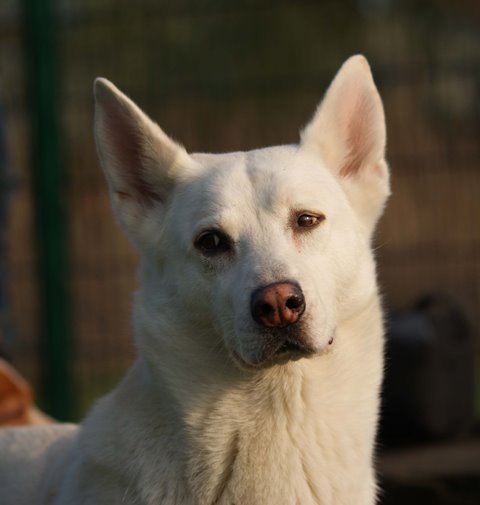
In dog education a new tendency has emerged and it preaches exactly that. It is based on scientific findings and the rejection of violence.
The only means of educating the dogs is positive reinforcement (such as praise, play, food or whatever other things the dog likes). Each behavioural pattern is supposed to contain a moment that can be reinforced, thus allowing you to modify and control your dog’s conduct. Sounds plausible and might even be quite appealing to interested dog owners.
After all, who really wants to scold the beloved family member? And who likes it, when the dog gives you that ‚big sad eyes-look‘ while retreating on his blanket? Honestly, who wouldn’t want to be only nice to his or her faithful friend, the one they love so much?
As somebody who would describe herself as an affectionate and peace-loving dog owner, I am concerned with science and have to do research work myself. So, of course, I have also investigated this new tendency. And, since I am against violence in education, I found that this new approach wasn’t a bad idea at all.
The theory of modern dog education
Let’s begin with the theory. To justify the course of action, ‚modern scientific findings‘ are invoked – which is a knock-out argument in itself because science is always right, isn’t it? Although, if you know anything about scientific work in practice, this argument is nullified.
Especially if you work in research and are part of scientific in-depth discussions, you know that science isn’t always right. For every subject there are several surveys, studies and experiments. And the interpretation of the resulting observations can differ largely from one scientist to another.
Sometimes you have to deal with statements which are simply contradicting. Studies contradict each others. One experiment contradicts another and some expert statements are contradicting too. From this point of view one would wish to know exactly which modern scientific findings form the basis for this new dog education trend.
I would love to get a closer look at those studies and experiments to see, if scientific standards have been met and whether the regular quality criteria apply. To call something science, doesn’t mean that it actually is serious scientific work. To date I haven’t been able to obtain any conclusive answers concerning my questions. And I also suspect that most followers of modern dog education, don’t really know what they are actually talking about themselves – otherwise an objective expert talk would be possible, wouldn’t it?
Essentially, reference is made to the theories of operant and classical conditioning. However, these theories are between 100 and 50 years old. Seriously, can they be called ‚recent scientific findings‘?
There’s also a major drawback to more recent experiments and studies which are sometimes given as a reference: biological behaviour research can’t look inside the dog’s mind. It can only draw conclusions from its reactions based on certain conditions present in the laboratory. But homogeneity among the examined dogs and the conditions in the clinical laboratory, are important for research. Which makes an application of these results in day to day life on a different dog and under different circumstances very difficult. To copy and transfer these results and use them as the basis of a whole educational concept is therefore equivalent to simply not thinking the whole thing through properly before applying it.
Science and normative statements
As somebody who studies science, I am also very surprised by the strong normative statements. Theories about learning methods and scientific theories alike never use normative statements. As a rule, they make descriptive statements which describe. They describe, for example, what kind of reaction can be expected under certain test conditions. But you will never find a conclusion, implying that ‚therefore the same reaction can always be expected‘. ‚Should‘ is normative and has got nothing to do with science. ‚You should never punish dogs‘ as a statement is ethical and not scientific. There is no indication as to why I shouldn’t punish my dog in this context.
What is interesting in this sense is the complete and utter denial of those studies, observations and experiments which represent the total opposite of what the defenders of modern dog education are preaching. By way of explanation: attitudes of stress and avoidance are frowned upon in modern dog education. They make the dog feel ‚bad‘ and we don’t want that. The dog should also never be hard-pushed into having to ‚appease‘.
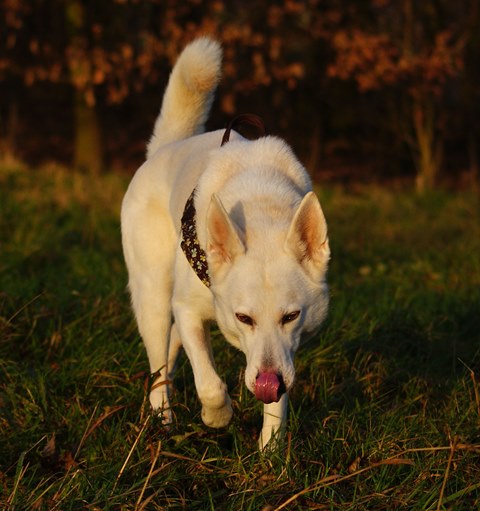
Günther Bloch for example, was able to show during his study on feral dogs, that several ‚appeasement gestures‘ in dogs are actually only normal gestures which aren’t very frequently used in communication.
A yawning dog is frequently also just a tired dog. Or think about the study showing that a dog, which had learned an interrupting signal by means of teletac (a remote control dog shock collar) and a prong collar, felt less stressed than a dog which had been educated only by positive reinforcement.
I would expect some conclusive arguments that speak against it. Even I don’t find that difficult although I’m not one of those people who always only work positively. But these findings are completely ignored and any kind of counter argument quickly becomes personal. Famous investigators like Mr. Dr. Gansloßer are being defamed by stating that ‚he’s only had one dog so far‘, therefore he can’t really know anything. The fact that for doing scientific research about an animal it is mandatory to own one (or several) yourself, is new to me.
And there are more studies which are not taken into consideration at all. For example the brand new theory about social learning. The knowledge has been around for some time but until recently it had never been used on dogs. This is also denied and since many followers of the new trend tend to become rather personal, they tell you that you ‚also don’t sniff at your dogs bum…‘. That’s not an argument of course, nobody would favour this.
It is, however, a fact that dogs understand when we snarl at them or stare at them, when we make ourselves big or block them with our body. Dogs permanently ‚dogify‘ their human. That’s why it’s even more important to behave in a clear and comprehensible way so the dog can understand you. Why I shouldn’t be allowed to use that any more is a mystery to me.
Putting it into practice / Practical dog keeping
Theory, however, is grey and abstract because what really counts in dog keeping is the practical use. So, let’s look at the practical side of modern dog education. At this point, things can sometimes get a bit absurd. According to the positive reinforcement theory, people are trying to find out what the dog likes best – which leads to situations as ludicrous as this: dog owners sitting on the floor with their dogs, holding pieces of cheese and chicken hearts out to them (the dogs), in order to find out the dog’s preference… If the dog tends to jerk or jump into its leash, a shock absorber is integrated into the lead. And of course the dog is wearing a harness, god forbid its neck gets damaged. That there is a human being at the other end of the leash, who might just break some bones while being dragged along or flying behind the dog, is a small matter and better ignored.
Each and every intervention is previously announced, whether it’s a change of direction, taking it to the leash, lifting it up, holding it, and so on. Heaven forbid the poor dog is startled or gets a negative feeling! Finally a red carpet is rolled out for the dog who seems to be the better human anyway.
Even a loud ’no‘ is frowned upon because it means that you are working with startle stimuli and the dog is only listening because it is afraid of the punishment. Instead they work with intermediate bridges. Lastly you can imagine somebody standing in the woods, calling for his or her dog. If the dog finally deigns to come back, its return is commented with a „good good good“ and then it gets its reward. And, of course, if the dog turns around half way because it’s found something better to do, it doesn’t have to expect any consequence at all. Except that next time it might not be let off the leash in the first place.
All this sounds rather ludicrous but the limits of this kind of education soon become clear. As soon as the dog finds something better to do than the chicken hearts offered by the human, it will turn its attention towards the new attraction. Hunting rabbits for example, is for most gun-dogs far more interesting than food from a human. After all, if by doing so, the dog doesn’t have to expect any kind of consequences, WHY should it NOT?
All this, of course, is a slowly developing process, meant to establish a conduct that also works in situations which are very distracting for the dog. Though seemingly possible in theory, it is hard to put into practice. Unsurprisingly, many people who work like that only get to a certain point from where they can’t go any further. At the very moment, when the dog finds itself in a conflict of interests, you as a dog-owner are powerless. Therefore, it is no wonder that we hardly ever get to see the final result in problem dogs which have been ‚cured‘ this way.
The dog as a stimulus-response machine?
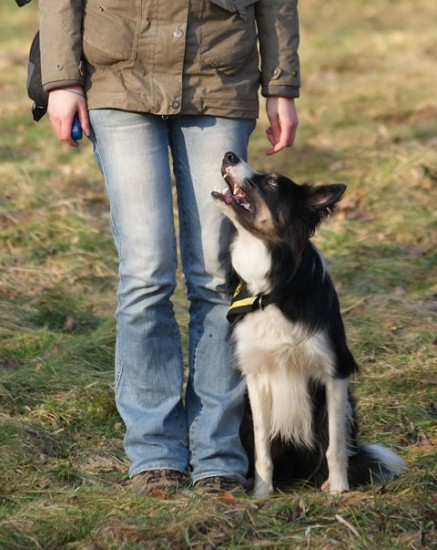
In the end, all you manage to do, is to degrade the dog into a stimulus-response-machine. If it shows reaction A, it gets a reward. In consequence it shows reaction A more frequently. This is the basic principle this education focuses on.
What a simple equation, where it not for the fact that our dogs are such highly developed social beings, which share our lives in a special kind of relationship. They permanently make us social offers. Why should we not react in a social way too?
Why should one start with conditioning at this point, when all it does is encumber the communication in its original form? If we briefly return to China for a moment, just think how thankful you would be, if somebody took you by the hand and showed you how to act and behave in this new cultural environment.
A stern look when holding out your hand might be initially disconcerting but in the long term it takes away a lot of uncertainty because at least now you’ve understood that shaking hands is a no no – and you can continue on your way a bit more reassured.
But with dogs, precisely this is done. They are forced to continuously live in a limbo, not knowing what exactly they are expected to do or not to do. Inherent risks such as latent over-strain and uncertainty are also denied. „Dogs don’t show that, when you only work positively.“ Unfortunately, reality often looks quite different. To counter stress symptoms or uncertainty, the wonderfully positive clicker training method is used without realising that all the dog really needs are some clear guidelines to help situate it in its environment.
Aggressions
Which leads to the next point I find hard to accept: It is stated that everything can be used in a positive way. But what can you do when the dog shows aggressive behaviour? Usually people chose the way of systematic desensitization. In order to provide the dog with a positive feeling about stimuli that initially cause an aggressive reaction, such as other dogs for example, the required distance is kept and the other dog is ‚clicked‘. It might work – in theory. But practical life doesn’t follow theories. Often times you find yourself in a situation which just can’t be avoided. Be it because a ‚harmless‘ dog approaches or because there isn’t enough distance to the other side of the street or because you simply see the other dog too late. It’s impossible to control real life. This means that your dog is going to fall back into old behavioural patterns once and again, thus preventing the development of alternative behaviour.
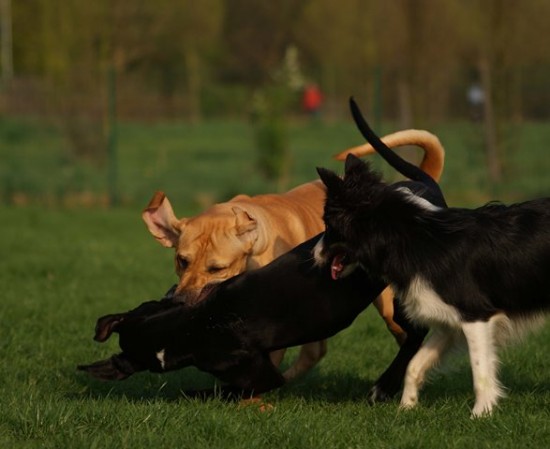
At this point one frequently hears the argument that aggressive misbehaviour can also be corrected by using the ‚clicker therapy‘ (mentioned above) which would allow the dog to have a positive experience through the process. But aren’t we missing a major point here? Who said that dogs actually experience aggressive situations as something negative? That’s something particularly female followers feel.
But dogs aren’t humans and even less women ;) Women perceive any kind of aggression as clearly negative because that’s what they’ve been taught in society. A women doesn’t have much right to be aggressive and she is not supposed to use aggressive tactics to solve conflicts either.
No wonder then, that women tend to solve conflicts in a non-aggressive way – and this also includes their dogs of course. Aggressions can be a positive experience, however. Most men will probably agree with me when I say that it can be quite satisfying to let off some steam from time to time.
This is a well known phenomenon in adolescents and children who beat each others up just for the fun of it. Aggressions, in the animal kingdom, are not a bad thing, they are simply a way of conflict management. It’s completely wrong to say that a negative sensation is responsible for aggressions. The reasons for aggressive behaviour are manifold and complex. A hearty aggression cannot be answered with chicken hearts or any other treat!
According to those people who only work with positive reinforcement, the cause for aggressive behaviour in a dog is to be found in its emotional state. If you ask them, what created its emotional state you usually get the same answer:
It’s had a bad experience in the past.
It might have been jostled by a so called harmless dog when it was a puppy, or attacked by another dog, annoyed by strangers or got frightened because of some teens running a riot in the neighbourhood and so on.
One thing is always clear: the cause for the dog’s emotional disorder is mainly found outside and is therefore outside the owner’s control. What they usually forget is that the reasons for disorders are very complex. The dog-owner also plays a significant role which must not be underestimated. Insecure dog-owners often have insecure dogs. The shock of an attack has a strong impact on the human as well. Over-caution, consoling and fear are the consequences in humans and this in turn has a strong effect on the dog too.
Personality development at risk from over-control: how dogs learn to be helpless
To follow the step-by-step training and avoid the risk of ‚disorders‘, the training usually takes place in a strictly controlled environment. In fact, the dog doesn’t take any decisions at all and is not supposed or even desired to deal with any kind of uncomfortable situation any more. All of which begs one question: how is a dog under such circumstances supposed to evolve and develop a healthy self-esteem to help it deal with unexpected situations?
Non-violent dog training?
Since I’m not a dog trainer nor a behaviour analyst, how people treat their dogs shouldn’t really matter to me. And to a certain degree I really don’t care. As long as I don’t see anybody beating up his or her dog in blind madness, everybody is free to do as he or her pleases. What does bother me is when these ’softies‘ get on their high horses looking down their nose at all other dog-owners. They take it for granted that they are the better people and when asked why they work the way they do the answer is usually the same:
I am against any kind of violence and I practise this philosophy with my dog(s) as well.
What exactly is violence? If a simple impulse on the leash is considered violence, then I must be a violent person – though I don’t actually use this technique to willingly harm my dog. All I do is use it to get back its attention. If I tapped you on the shoulder, you wouldn’t consider me violent, would you? Positive reinforcement as educational approach is also called the ’non-violent way‘. Which might very well be the case but other techniques are also non-violent. Violence is NOT a punishment. But by making the the above statement, what you suggest is that all other techniques ARE violent.
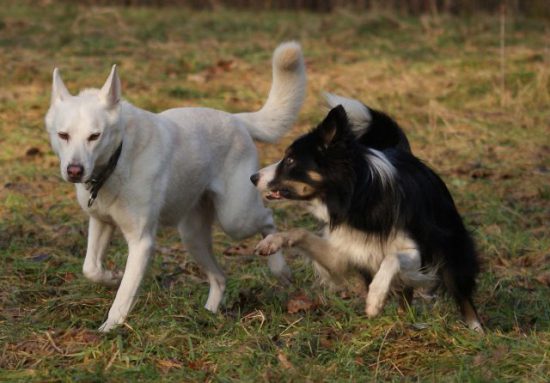
In any case, this non-violent attitude seems to stop at the dog. Why else would particularly the followers of modern dog education be the most fervent participants in Shitstorms(editor’s note: the renowned German dictionary „Der Duden“ defines a Shitstorm as a clamour of outrage, which can also include offensive comments, in the communication media on the Internet) to such an extent that it can even deprive some trainers of their livelihood? That’s not exactly non-violent, is it? Which leads to the question, whether these people really manage to always be as nice to their dogs as they try to make us believe. Even more so because I ask myself just what kind of super-human you’ve got to be to always only work positively with your dog, no matter what.
When I have a bad day, I snarl at anyone who comes too close and without my morning coffee, I’m positively obnoxious. And I kind of find it hard to believe that I’m the big exception here. Of course, in a moment like that, I might be not so nice to my dogs too. And I make them understand that I do not wish a certain behaviour. Really, on a day like that I’m not going to spend hours trying to find the moment I can positively reinforce.
And even if I set my mind on it – it would be impossible to work like that all the time. And to tell the truth, I suspect that some ’softies‘ find themselves in the same situation. As always, things are easier said than done.
Cultivating a culture of open communication
An open attitude, that’s exactly what I’d wish for now. Even though this article might give a different impression, I do try to work with my dogs as positively as possible. I like using the clicker and marker-words too. All commandos are taught in a positive way. My dog doesn’t have to listen to me just ‚because it’s got to do that for me‘. And of course I don’t smack the leash on its head, if for once it doesn’t want to listen at all.
What’s most important for me in dog-keeping is to be close, a strong bond and a relationship based on mutual trust. That’s not something you can achieve by permanently avoiding things and situations. My dogs don’t have to be able to do everything and I certainly don’t want to transmogrify my dog so that it fits me like a glove. Instead, I prefer characteristics such as personality and stability. Nevertheless, most ’softies‘ still perceive me as somebody who is part of ‚the others‘. Which means that I’ve seen myself exposed to offence, harsh criticism, and even open hostility.
Unfortunately, with this negative attitude they also block the way for trainers to learn and improve. Many problems can actually be solved with positive reinforcement. But for people to learn, it is important to cultivate a culture of open communication instead of denying everything that doesn’t fit into your picture of a perfect world. Positive reinforcement has its limits, but nobody every says that in public.
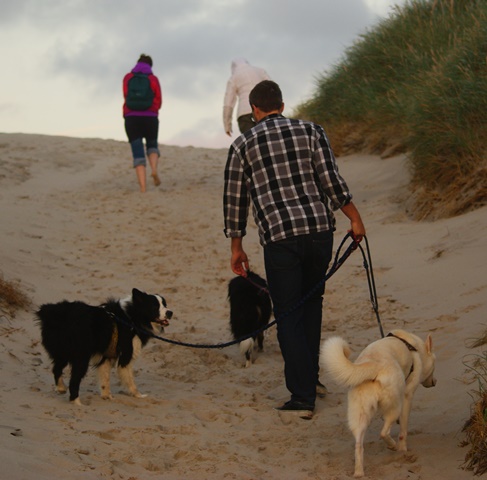
Therefore I expect a ‚Shitstorm‘ within reasonable limits. Share & link this article and talk about it on other platforms, groups and blogs or write your comment below. Please try an open conversation and don’t hide your opinion.
It remains to be hoped that this article will help some concerned dog owners to re-discover their own way to take care of their dogs and listen to their own gut feeling. But what is even more important: your own authenticity, to show yourself to your dog just the way you are. I’m sure many problems would be solved just by that.
Autor: Nina Dany
Translated: MJ
Editor’s note: Explanation of the title „Modern dog training methods: softies1, science, shitstorms2 and ethics under review“
1The word used in the original text is „Wattebäuschchenwerfer“ which literally translated means ’somebody who throws cotton wool balls at you‘. The term describes people who strongly favour a very non authoritarian approach to mostly everything in life and can sometimes be perceived as rather ‚wimpish‘.
2 ‚Shitstorm‘ is an Anglicism meaning ‚considerable backlash from the public‘. According to Wikipedia, ‚the term has come into inflationary use by German-speaking media since 2010 to describe a clamour of outrage on the Internet, especially by posting and writing in social media‚.


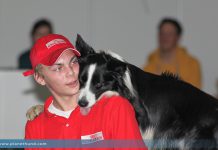


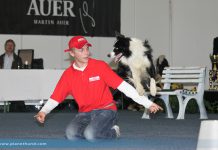






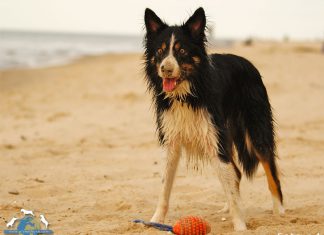




























Thank you for this article!
It is really ridiculous how people avoid setting boundaries to their dogs.
If you do, you are called cruel as if a dog shouldn’t learn to deal with discomfort as well. I do not beat up my dogs nor rather punish them instead of please, but being strict is in many peoples eyes so cruel.
For example:
A dog showing discomfort while being tied to a tree or something on its leash with the owner out of reach is said to be crual. But experience with this situation will learn the dog to cope with this discomfort and will make him stronger in discomfortable situations instead of crying out, biting the leash, barking, jumping and so on.
Ofcourse this asks for a good understanding of dog training, but the dog will learn that showing it’s comedy will not work and if it waits for his master in peace, the discomfort will come to an end. Next to that, the feeling of discomfort will disappear, because really it isn’t much of a dal in the end. There doesn’t seem to be much character-development in dogtraining anymore. This makes some modernly trained dogs wimps in discomfortable situations and make others unreliable because they never learned to deal with bad feelings.